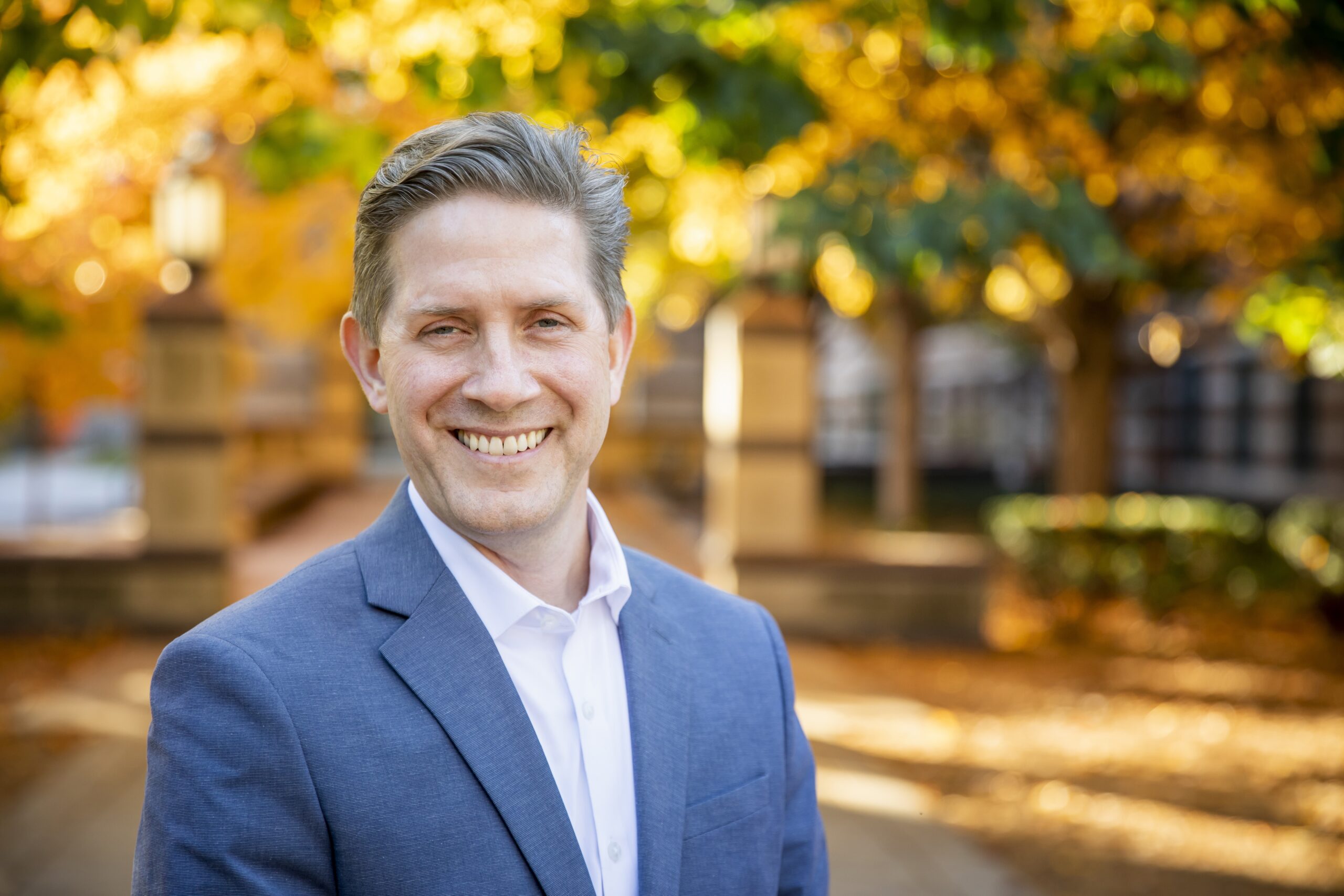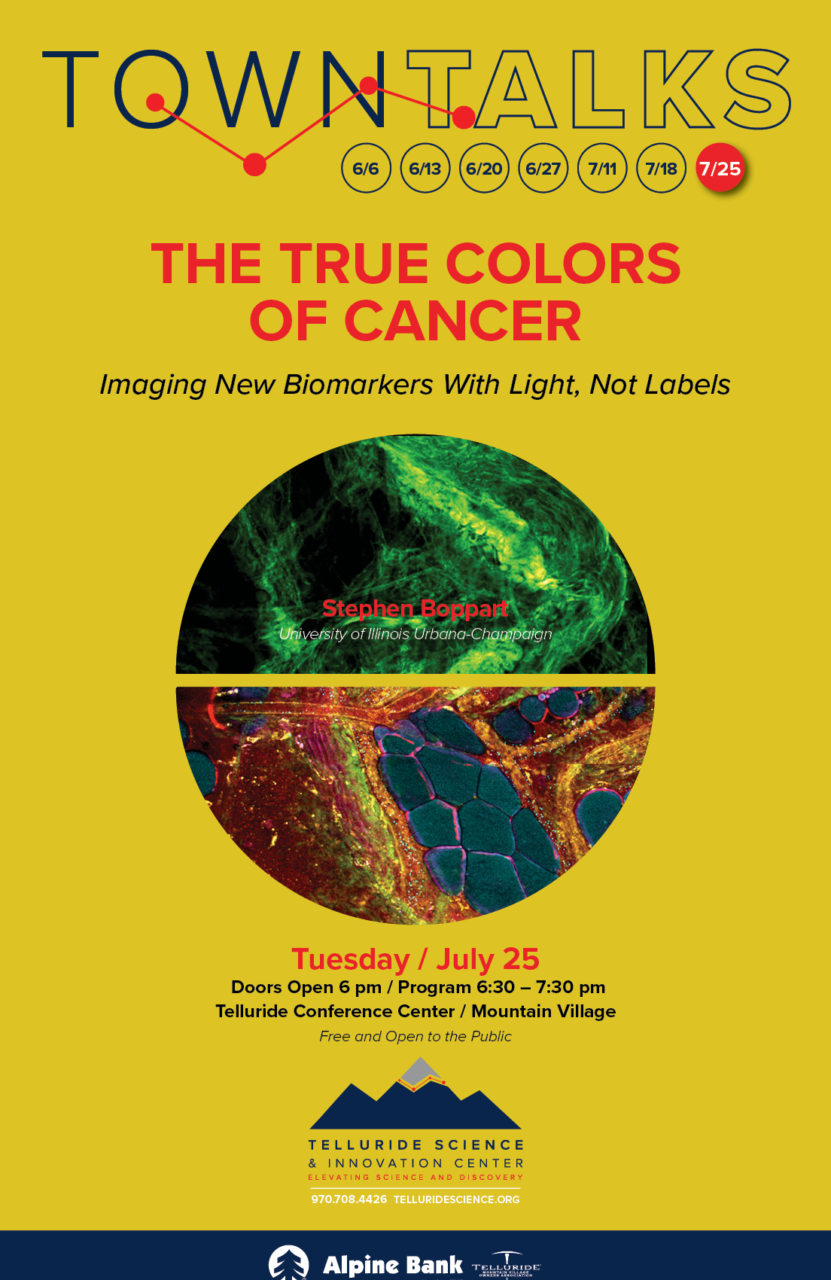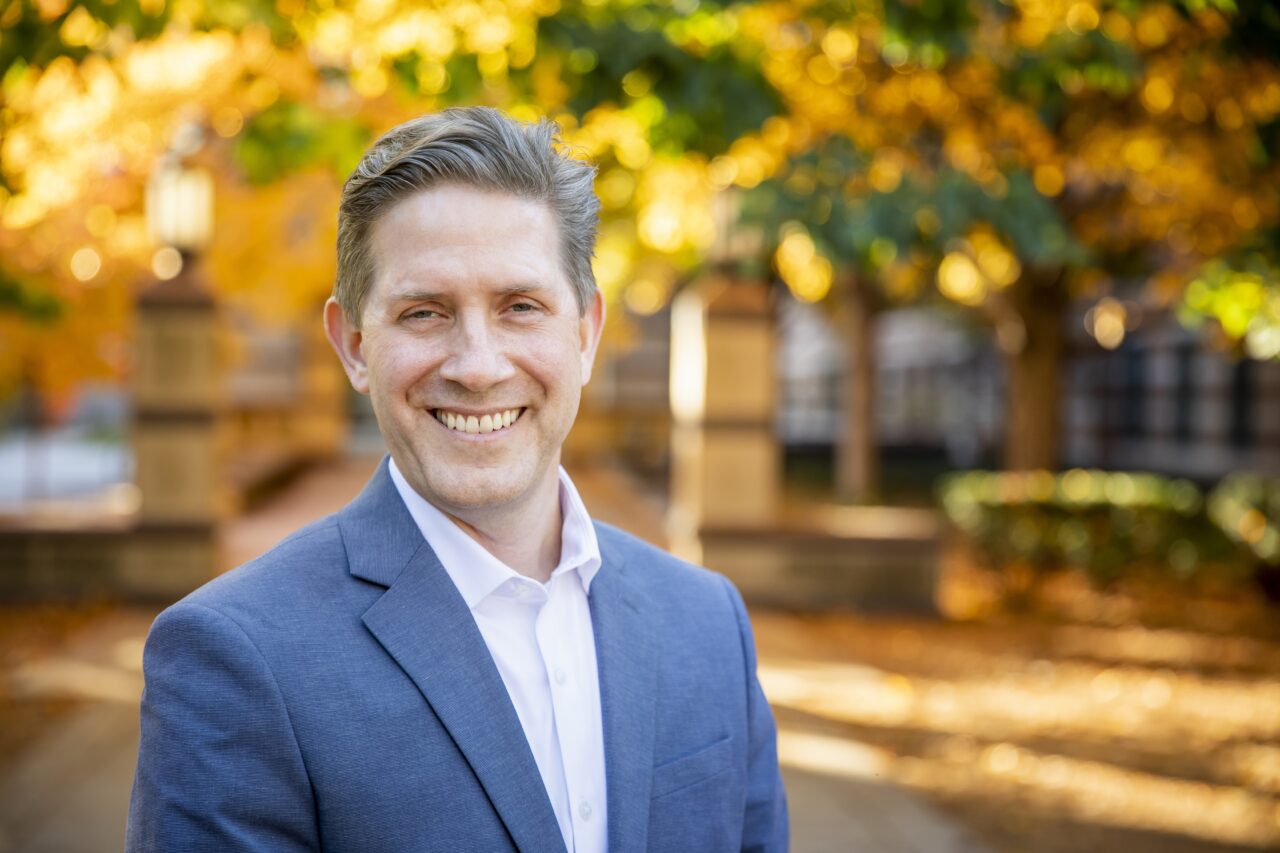
20 Jul Telluride Science (Final)Town Talk: “The True Colors of Cancer,” 7/25!
This coming week the 2023 Telluride Science Town Talks series continues with Dr. Stephen Boppart on “The True Colors of Cancer.” The event takes place July 25, 6:30 pm, at the Telluride Conference Center in Mountain Village. Town Talks are FREE and open to the public.
Visit telluridescience.org to learn more about Telluride Science and the capital campaign to transform the historic Telluride Depot into the Telluride Science & Innovation Center. The venue will be permanent home for Telluride Science and a global hub of inspired knowledge exchange and development where great minds get to solve great challenges.
The 2023 Telluride Science Town Talks series is being presented by Alpine Bank with additional support from the Telluride Mountain Village Owner’s Association.
Go here for more on Telluride Science.
Go here for more on Town Talks.

Know what the most common type of cancer is?
Answer: breast cancer.
The fact is breast cancer affects one in every eight women, and even some men, though at a much lower rate.
On top of that, about one-third of all breast cancer surgeries are unsuccessful in removing the entire tumor. The result? Patients needing to return for a second operation.
And that unhappy situation is where Dr. Stephen Boppart’s work comes into the picture.
On Tuesday, July 25, at the Telluride Science Town Talk, “The True Colors of Cancer,” Boppart will discuss his team’s research into the development of new microscopes. Those instruments can provide information about the health of the tissues in our bodies in general – and specifically surrounding that breast cancer– more efficiently than ever before in medical history.
Nowadays cancer diagnoses often rely on biopsies. In those procedures, a region of tissue is removed, sectioned, and then stained with various dyes before being observed under a microscope to find any abnormalities, a process that can easily take up to two days to complete. Meanwhile, patients wait anxiously.
The microscopes Boppart’s team builds at Biophotonics Imaging Laboratory avoid that step, making the diagnostic process much quicker:
“Our technology can image tissue just like a biopsy, but without having to remove the tissue, stain it, or process it.”
Without dyes, those microscopes rely on the “true colors of cancer,” hence the title of the talk. Simply put, scientists can shine a customized light on any tissue and receive back different wavelengths that tell them all they need to know about the condition of the cells.
Because these microscopes can produce images within seconds, Boppart envisions them being used in the operating room to avoid the potential for repeat surgeries:
“During surgery, the surgeon can remove the tumorous tissue and that tissue can be imaged under the microscope right away.”
Furthermore, these microscopes allow scientists to visualize the movement of cells. That can provide a lot more information about the growth patterns of cancer.
As of now, Boppart’s research is centered on cancer diagnosis exclusively, but his work has the potential to become helpful in any area of diagnostic medicine where imaging tissue is necessary.
The newest advancement in this area of research is the use of artificial intelligence (AI).
As Boppart expressed in an interview: ““This field is ideal for AI as AI is good at identifying patterns, which is great because, with so much data, the human eye and brain often have difficulty locating those patterns.”
In other words, like Boppart’s microscopes, AI can be used as a tool to speed up any diagnostic process, while maintaining, even improving, accuracy.
Boppart is also quick to emphasize the importance of collaboration in science and medicine:
“Ours is very interdisciplinary research. It takes a lot of different areas of expertise to do this type of work, but that is also very exciting because the work has a direct and positive impact on human health.”
Dr. Stephen Boppart, more:

Like his research today, Boppart’s education combined many fields. He holds Bachelor’s and Master’s degrees in electrical engineering; a PhD in medical and electrical engineering; and an MD, with a specialty in internal medicine.
Boppart decided to pursue medicine during his doctoral work in imaging technology:
“I realized that the field of medicine could really benefit from engineers and thinking about engineering solutions to problems, not just the biological and pharmacological ones.”
Today, Boppart is a professor at the University of Illinois Urbana-Champaign, head of the Biophotonics Imaging Laboratory, and co-founder of four start-up companies for biomedical imaging technologies he has created.


Sorry, the comment form is closed at this time.